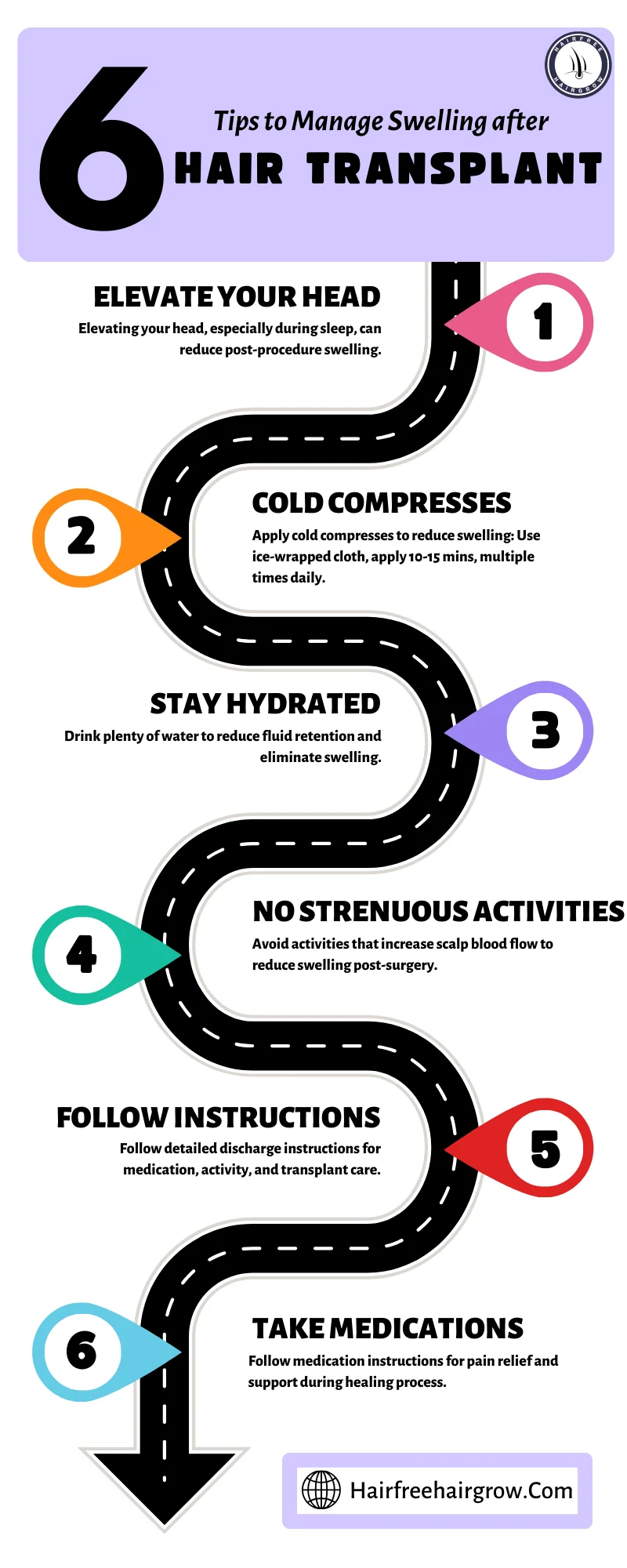The swelling that follows a hair replacement treatment is a usual area of anxiety for people undergoing this surgery. Although it is a part of the body’s natural healing process, it can be a real pain sometimes and even a bit scary for patients. Nevertheless, knowing why you are having swelling and what to do about it can make your anxiety lessen and facilitate a quick and smooth recovery. Learn about swelling after hair transplant, its causes, and how to reduce it.

Understanding Swelling Post Hair Transplant
Generally, the swelling appears on the third day after the procedure and it must not be surprising since the body has many defense mechanisms. Micro-cuts in the scalp are made where the grafts are inserted and this causes a small amount of tissue damage. Consequently, the body sends in blood and different fluids to the injured area in order to help with the healing process, which results in swelling.
Managing Swelling - Be Active and Take Some Steps
Follow Your Surgeon's Instructions
Your surgeon will provide you with detailed discharge instructions that you will need to follow. Such as those regulating the use of medications, activity level, and handling of the transplant site. Following these guidelines is essential to avoid swelling and to ensure a successful process of healing.
Keep Your Head Elevated
Having your head above the level, particularly when you sleep, might lessen the swelling. If you need to, place a few more pillows behind you or even sleep in a recliner for the first few days after your procedure.
Apply Cold Compresses
Cold compresses are blood vessel constricting and thus reduce edema. Take a clean cloth or ice pack placed in a towel and apply it tenderly to the swollen areas for 10-15 minutes at a time several times a day.
Stay Hydrated
You can remove excess fluids from your body by drinking a lot of water, thus eliminating edema. Try to take about 8-10 glasses of water everyday unless your doctor advises otherwise.
Avoid Strenuous Activity
Do not engage in actions which may lead to the escalation of blood circulation to the scalp and thus make swelling more intense, such as intense sports, heavy lifting and bending over. Do not over-strain yourself and rest as much as possible in the immediate days after the surgery.
Take Prescribed Medications
Your surgery may be followed by drug therapy aimed at relieving swelling and pain, which include painkillers and anti-inflammatory drugs. Follow instruction and take this medicine advised to relieve symptoms and to support this healing process.
When to Seek Medical Attention
While some swelling is normal after a hair transplant, excessive or prolonged swelling may indicate a complication that requires medical attention. Contact your surgeon if you experience any of the following:
In addition, excessive or aggravating swelling that does not respond to home care remedies.
Redness, warmth, or drainage in the area of transplantation may imply an infection.
Fever or chills, which may be the signs of the infection.
Conclusion
Swelling, which commonly resolves itself after a week or two in 90% of cases, is a nuisance that every hair transplant patient must go through. By adhering to your doctor’s directions and maintaining good self-care practices, as well as knowing when to seek assistance if need be, you are able to manage this aspect of your healing journey with confidence. Recall that it takes patience and eventually you’ll feel good with the effects of the hair transplant with a little pain.


